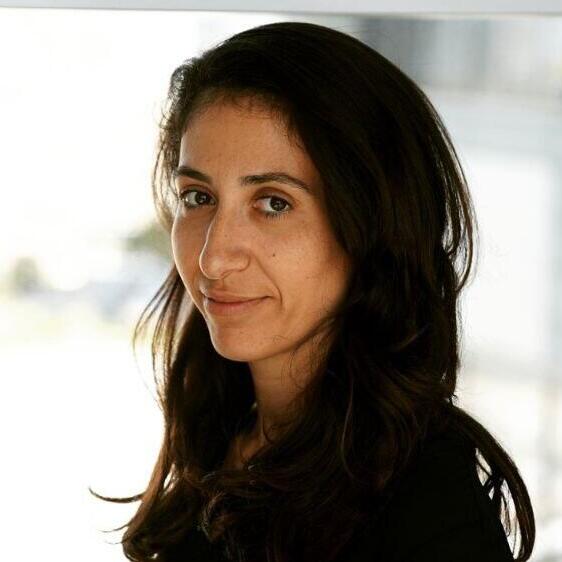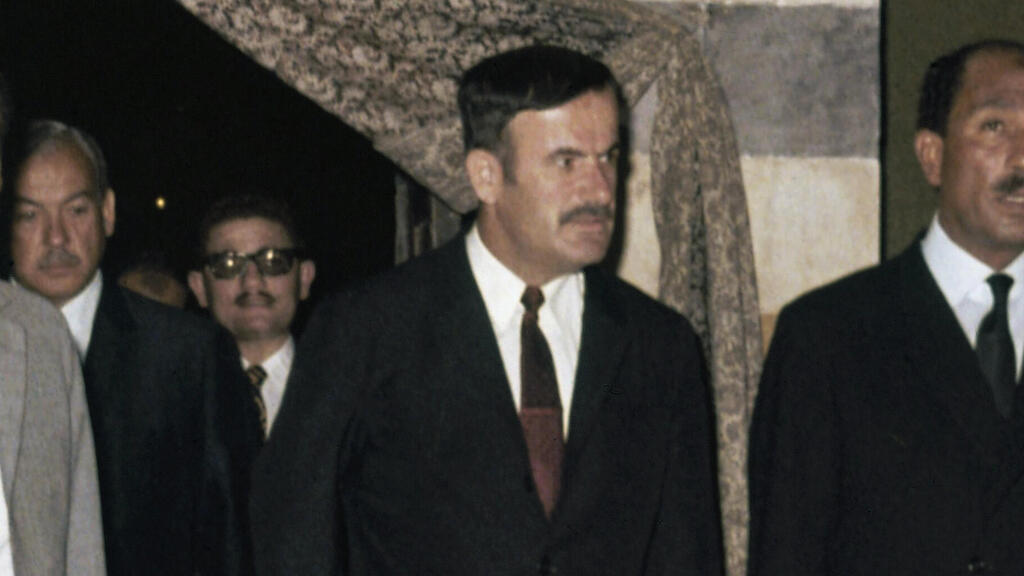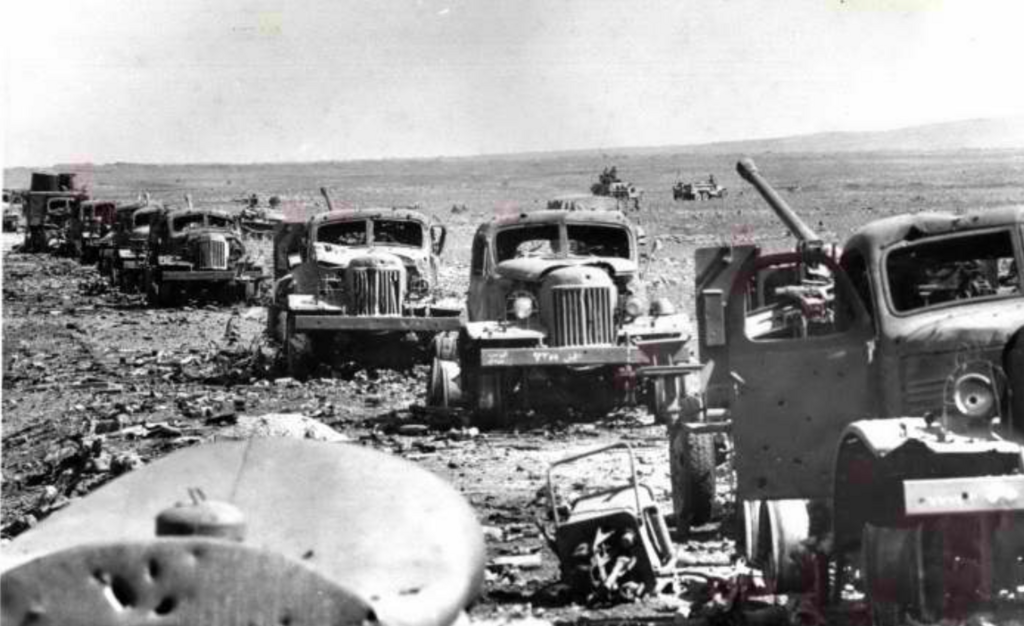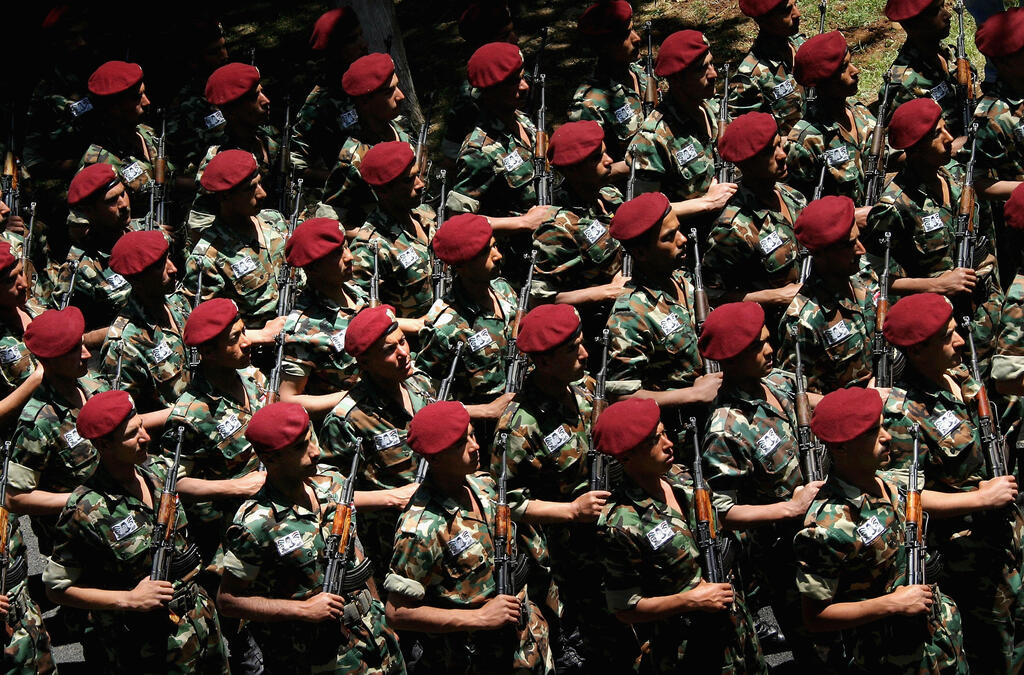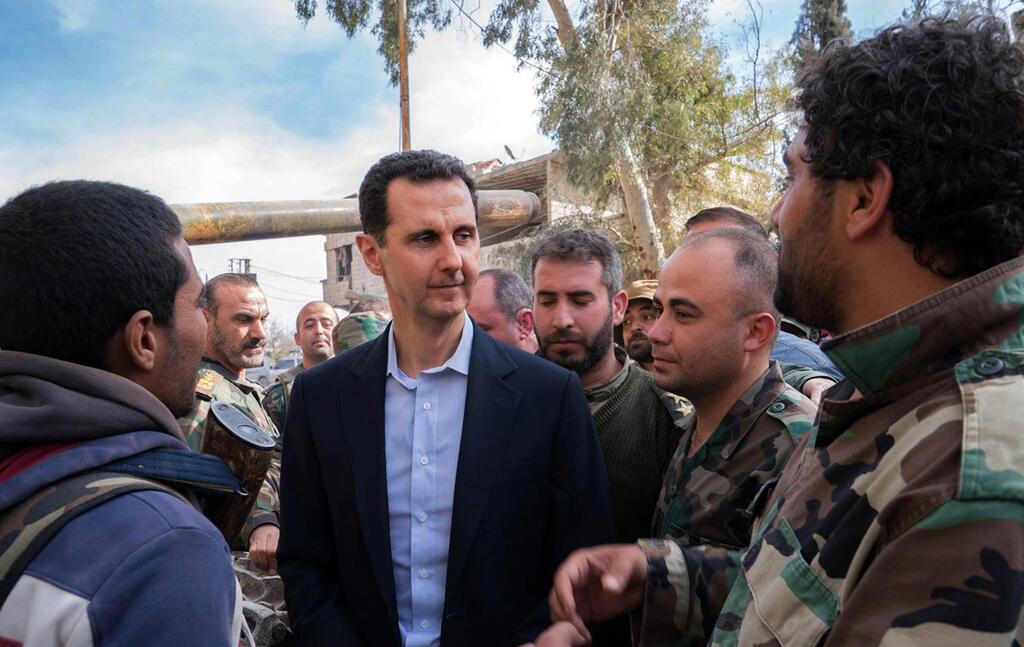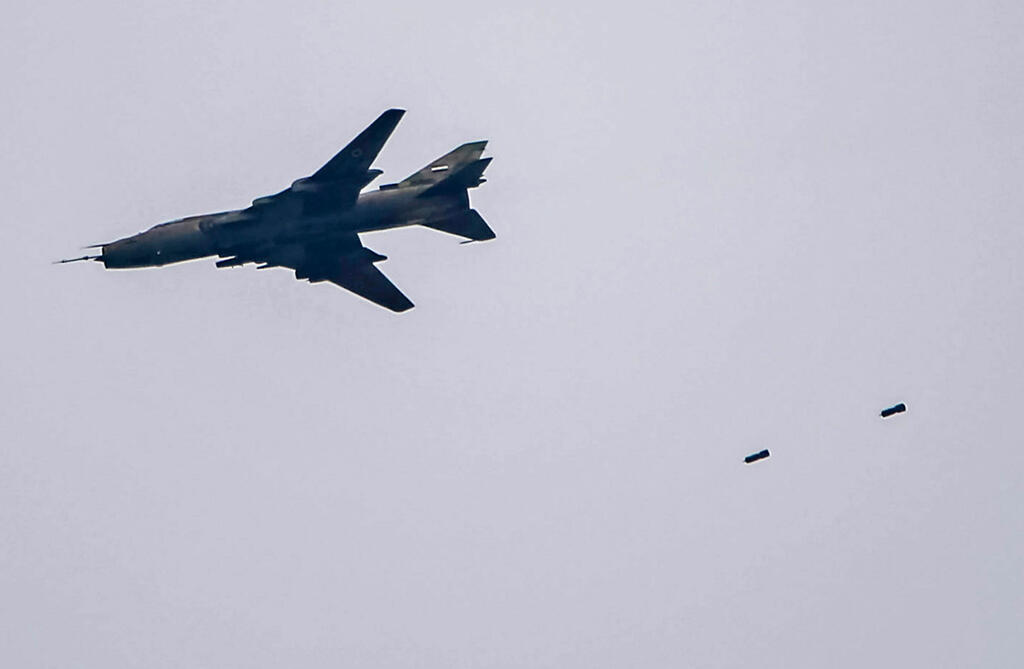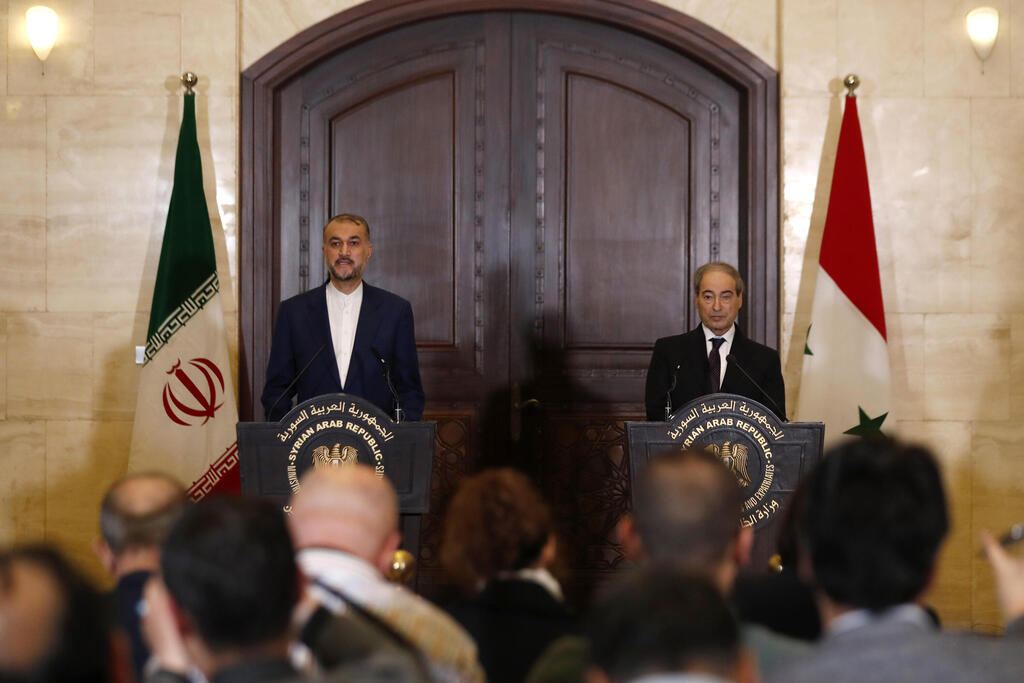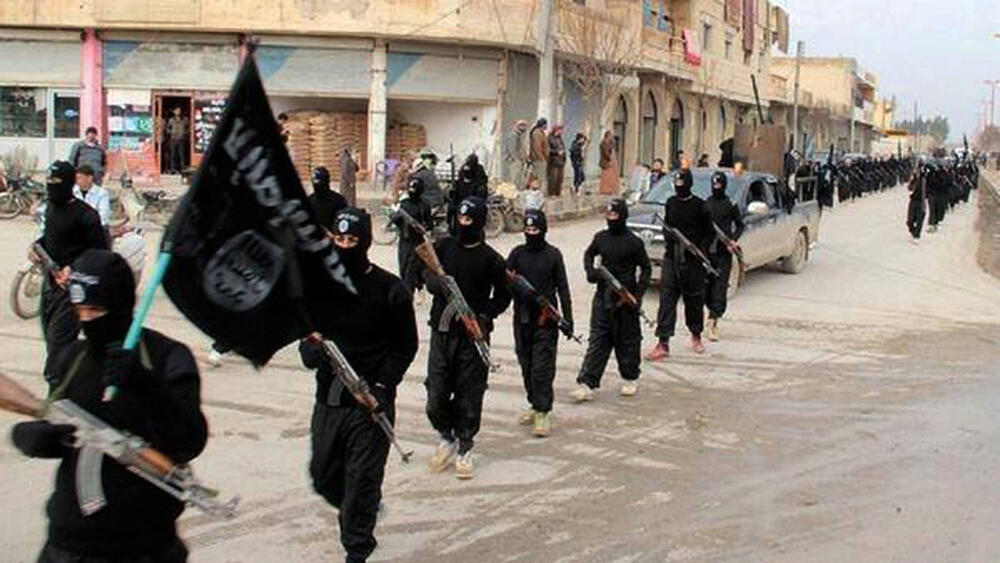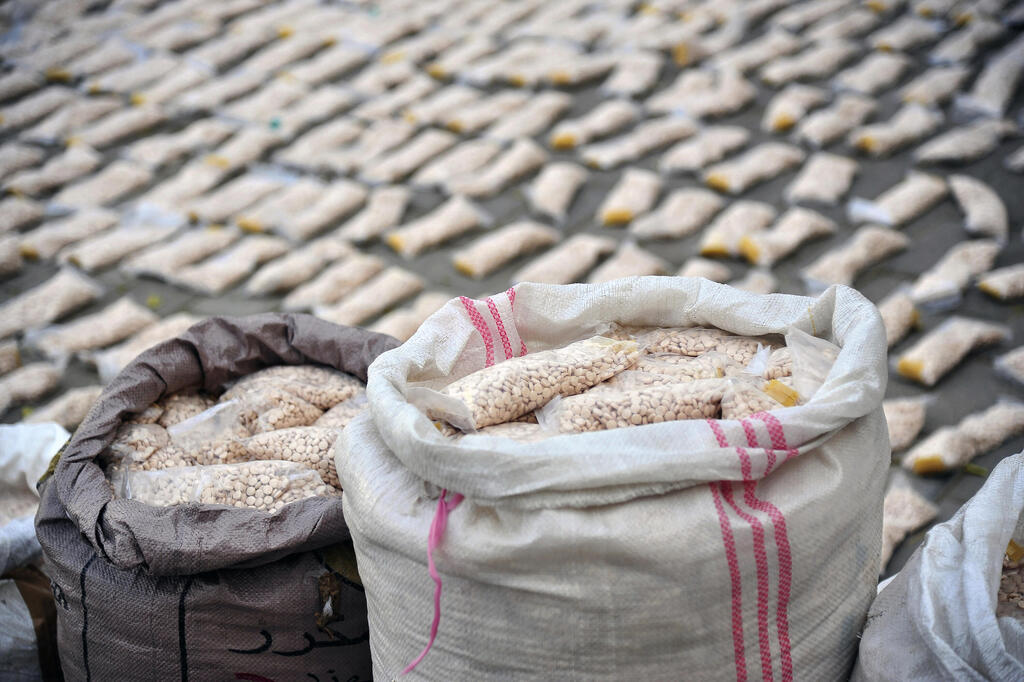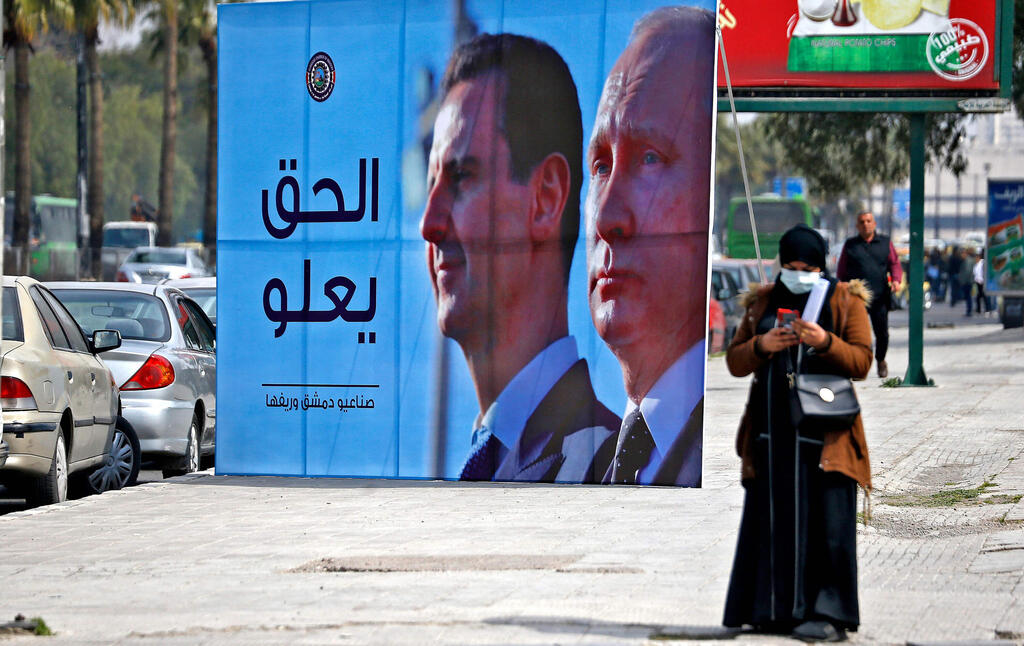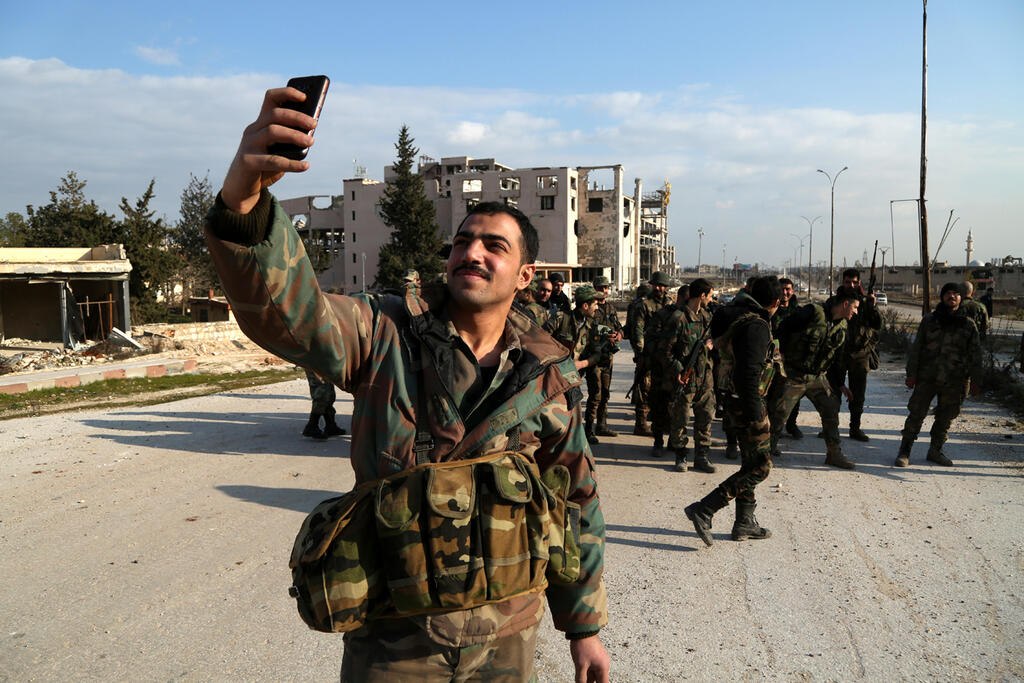Getting your Trinity Audio player ready...
Historically considered a relentless enemy of Israel, the Syrian army's status declined due to the country's civil war. Materially and publicly, the army is no longer perceived as a national army, but as “Assad’s army.” Despite this, it is rearming and attempting to operate with the resources it has.
Syrian army drill
The Syrian army, initially formed from the French Army of the Levant in Lebanon and Syria, played an integral role in the combined Arab assault on the newly established State of Israel in 1948. "We couldn't push it out of all the territory it occupied in Israel, and since has been a pesky and provocative enemy from the Golan Heights," said Prof. Eyal Zisser, a modern Lebanese and Syrian history expert and vice-rector at Tel Aviv University.
Like many armies in the region, Syria's military attempted coups, and in February 1966, a group of young officers from the leftist faction of the ruling Ba'ath party seized power. According to Prof. Zisser, this faction did not receive substantial public support and faced bitter internal conflicts, prompting them to unite the country with a familiar ideology - uniting everyone against Israel.
16 View gallery
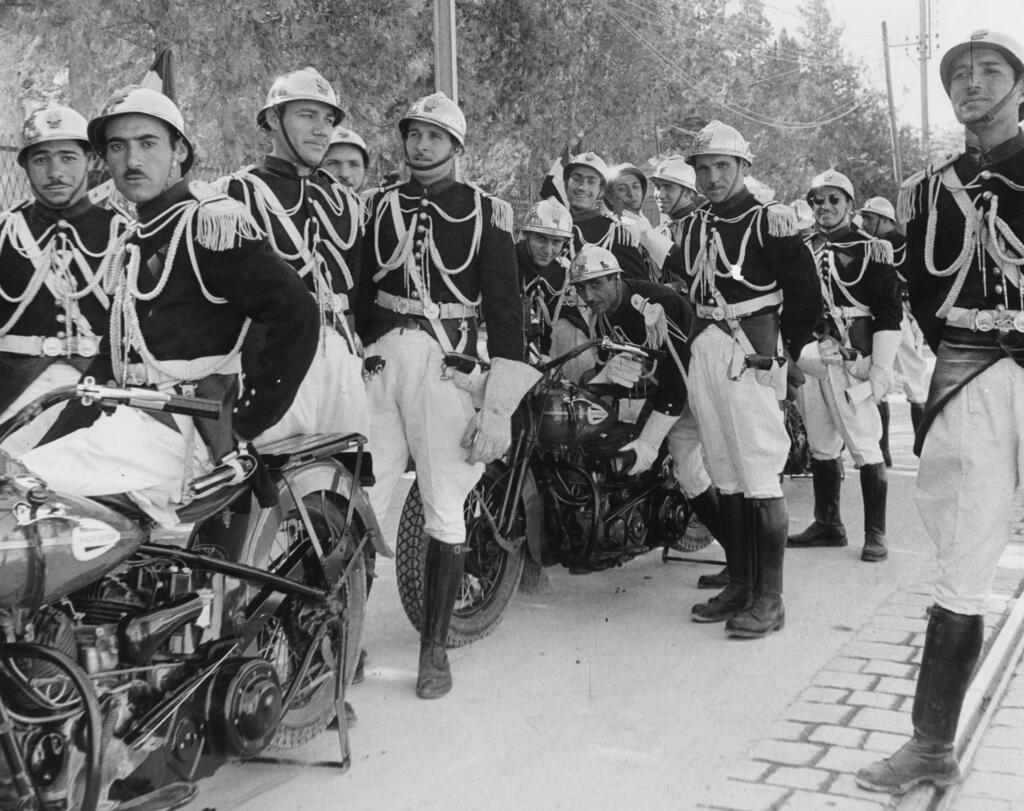

Honor guard of the presidential forces in the Syrian army, 1955
(Photo: Three Lions/Getty Images)
For this reason, the Syrians worked to divert the Jordan River’s water sources, initiated conflicts in demilitarized zones and sponsored Fatah terrorist attacks, which they helped establish in Damascus as early as 1965.
Despite their bold declarations and aggressive policies, Prof. Zisser explains that in the early days of the 1967 Six-Day War, the Syrians tried to maintain a low profile. "Their military actions were likely intended to create an alibi for themselves in response to Egyptian pressure to uphold their part of the defense agreement."
The defeat in the Six-Day War profoundly affected Hafez al-Assad, then a young defense minister. Three years later, he seized power in a military coup and focused on rebuilding the nation's military might. "These years saw a very significant increase in the power and strength of the Syrian army. Beyond the war with Israel, the army was always part of the defense of the regime, and its mission was a combination of both," explained Prof. Zisser.
16 View gallery
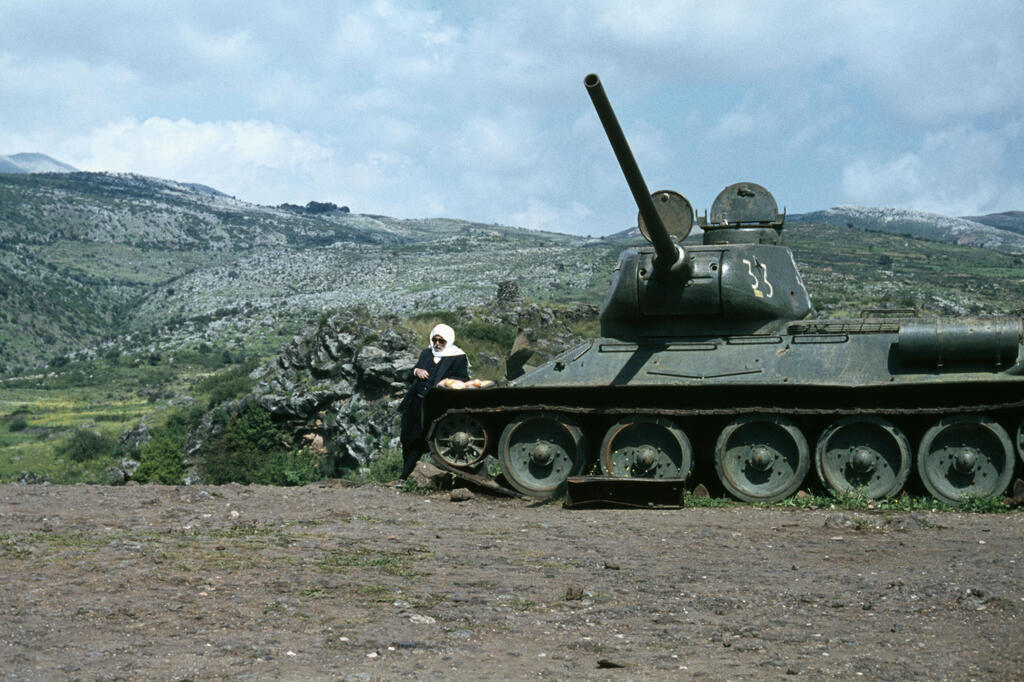

A Syrian tank on the summit of Syrian Mount Hermon, 1971
(Photo: Frances M. Ginter/Getty Images)
In the years following the Six-Day War, the Syrian army led numerous incidents, sometimes directly and sometimes simply by allowing Palestinian terrorist organizations to operate from Syrian territory. The peak was the "Three-Day War" in 1970, which began with a Syrian bombardment along the border, during which they attempted to attack IDF infantry positions. In response, the IDF launched an operation that destroyed five Syrian frontline positions and struck military camps deep within the country.
At the beginning of 1973, there was relative calm on the front, but then the Yom Kippur War erupted. According to Assad, the war aimed to reclaim territories occupied by Israel in the Six-Day War. "They sought revenge in 1973. Although they were eventually repelled, they initially had significant successes – capturing Mount Hermon and taking control of parts of the Golan Heights," said Prof. Zisser.
The Lebanese quagmire
In the wake of the Lebanese Civil War in the 1970s, Syria gradually deployed military forces into Lebanon. Initially, these were Palestinian battalions, but later Syrian commando battalions disguised as terrorists and PLO members were introduced. Unable to restore peace through diplomatic pressure and limited military involvement, the Syrian army eventually launched a massive offensive.
Over the years, there have been numerous clashes between IDF forces targeting terrorists in refugee camps and the Syrian forces defending them. A study by the IDF's History Department highlights that the introduction of advanced Syrian missiles into Lebanon was a turning point in Israel's attitude toward Syrian presence in the country. From that point on, the primary reason for IDF operations in Lebanon shifted from defending Christian forces to ensuring the IDF's operational freedom in Lebanon.
16 View gallery
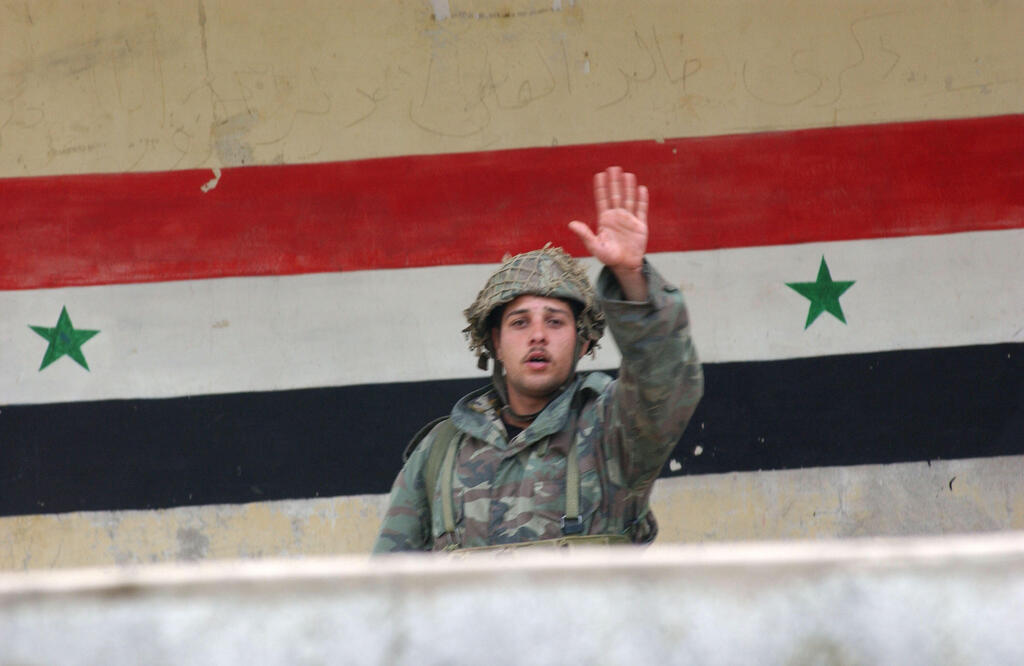

A Syrian soldier at a position in the Lebanese coastal city of Batroun, 2003
(Photo: Getty Images / Stringer)
16 View gallery
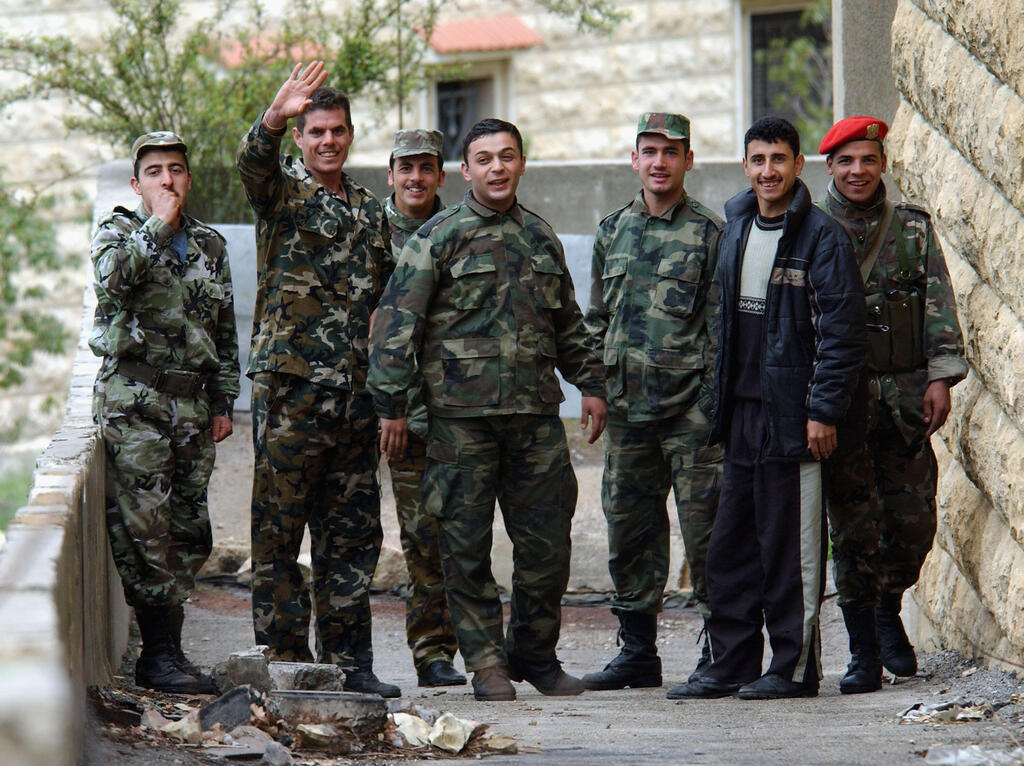

Syrian soldiers at the entrance to a base in Lebanon, 2005
(Photo: Marco Di Lauro/Getty Images)
16 View gallery
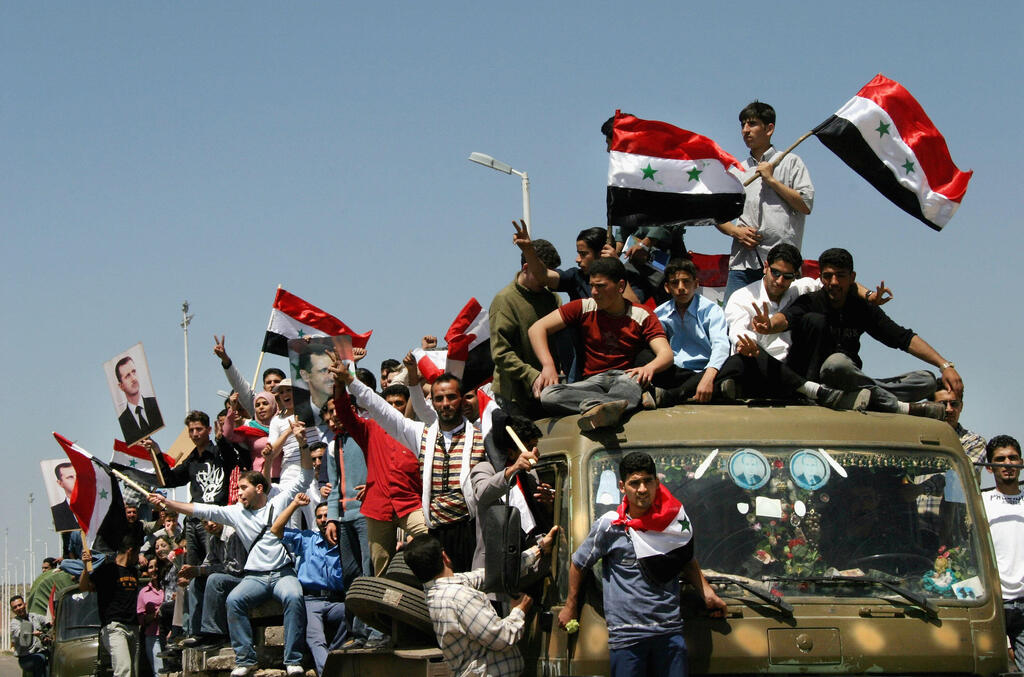

A welcome for Syrian soldiers returning home
(Photo: Ghaith Abdul-Ahad/Getty Images)
The Lebanese Civil War persisted intermittently until 1991, with Syrian forces actively involved throughout. The conflict ended only after Syrian forces completed the conquest of all of Beirut and asserted control over the capital. The Syrian military presence in the neighboring country continued until 2005 when Syria was forced to withdraw following the assassination of Prime Minister Rafik Hariri, an act for which four Hezbollah operatives were indicted.
From a national army to Assad's army
To understand the current Syrian army, it's essential to look back at the start of Syrian President Bashar al-Assad's tenure, the son of Hafez. "The Syrian Army of 2024 is the result of 24 years under Bashar al-Assad," said Col. (Res.) Miri Eisin, a former senior intelligence officer and fellow at the ICT. "The Syrian army has taken a very different approach compared to other regional armies. When the war against Assad began in Syria, he had a large regular army. The entire organizational structure is still intact on paper."
According to CIA data, before the civil war in 2011, the Syrian armed forces consisted of approximately 300,000 soldiers, with 200,000-250,000 being Syrian army personnel. Additionally, the army had about 300,000 reservists. "This is an army based on corps, with a very Soviet-Russian integration. These corps are mixed units of tanks, infantry, artillery and engineering. Everything is integrated from the battalion level to the corps," added Col. (Res.) Eisin.
The army's corps are distributed across the country, with the border with Israel under the command of the 1st Corps, based in the Damascus area. The most critical division for future combat with Israel is the 7th Division, which is linked to Iran and Hezbollah and "is positioned closest to the border," explained Dr. Carmit Valensi, head of the Northern Program at the Institute for National Security Studies (INSS).
The civil war that erupted in Syria in 2011 caused a significant crisis for the Syrian army, which had been strengthening in preparation for a potential future confrontation with Israel. "Certain commanders in the corps opposed Bashar and defected with their units to the Free Syrian Army, while others remained loyal. The army completely split, but on paper, the corps numbers remained, though without any real significance," explained Col. (Res.) Eisin.
Millions of Syrian civilians either fled the country and became refugees or joined the ranks of the rebels, leading to a severe manpower shortage for the Syrian army. In response, the regime recruited anyone it could. The CIA reported that men in their late 40s and 50s, who were previously exempt from service, were conscripted without a discharge date.
The gaps in the Syrian army were filled by external actors who helped Assad maintain regime stability but also gained significant footholds in Syria. "Many Syrian officers deserted at the start of the war, and the Iranians and Russians somewhat filled the vacuum," said Dr. Valensi.
Hezbollah also got involved and joined the forces of the 1st Corps stationed in the Golan Heights. "It wasn't a Hezbollah unit, but Hezbollah was considered to have the best military capability and training compared to all the Shiites who joined the army," explained Col. (Res.) Eisin.
In 2021, the IDF revealed that Naqib Bashar Al-Hussein, the commander of a reconnaissance company in the 90th Brigade of the Syrian army, assisted Hezbollah with observations and coordinated the repair of Iran's and the terror organization's observation posts. He was described as a liaison between Hezbollah's southern headquarters and the 1st Corps of the Syrian army.
Foreign battles over control of the army
For years, until about 2018, there was a certain competition between the Russians and the Iranians for influence over the Syrian army. "Throughout the years of Russian involvement in Syria, the Syrian army has gradually become a somewhat different army," said Col. (Res.) Eisin.
"They no longer brought in tanks but shifted to light infantry. Everything seen in the Russia-Ukraine war also affected Syria. The 1st Corps theoretically has three divisions – two mechanized and one armored, but in practice, it's hard to say what they contain and if there are any weapons at all."
16 View gallery
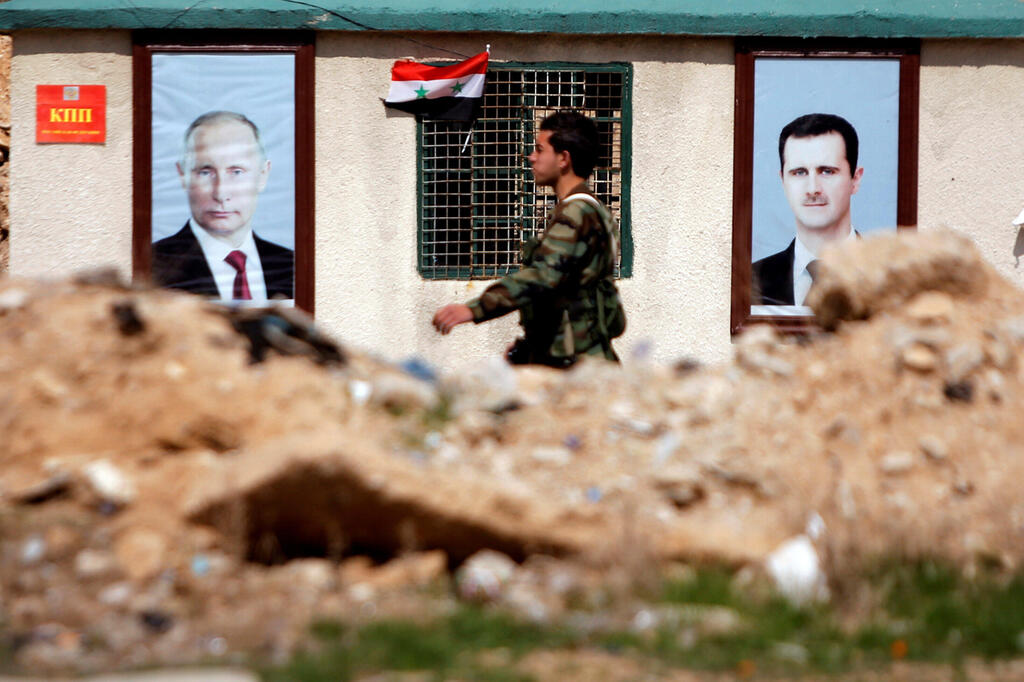

A Syrian soldier against the backdrop of portraits of Putin and Assad
(Photo: Reuters)
"The war in Ukraine clearly diverted Russian attention from the competition, allowing Iran to further establish itself in the Syrian army," said Dr. Valensi. "We see more Iranian presence following the war in Ukraine. We see how Russia reduces its investment in the 5th Corps – the body most identified with the Russians in the Syrian army. The Russians chose who would head it, and there have been many clashes with pro-Iranian forces. The Russian involvement in the Syrian army was one of the reasons why Israel initially refused to take a clear stance against Russia at the start of the war with Ukraine. Their presence on the ground and military assistance – which also included advanced air defense capabilities, were significant factors in Israel's decision to remain on the fence. But it seems that Russian involvement in the Syrian army is diminishing.
"A few months ago, it was reported that the Russians are reducing the funding of the corps by 50%. They don't have the time, attention or economic capability to maintain it at the same level as before," added Dr. Valensi.
"Additionally, there are frictions between Syrian and Russian military elements who were somewhat part of the Syrian army. Suddenly, we hear Russian complaints about being excluded from intelligence materials and professional activities. There is a shake-up of Russian dominance, and Iran is exploiting the vacuum."
The one filling Russia's vacuum, and who’s been there longer before, is Iran. "I can say quite confidently today that the Iranians are very dominant in the Syrian army. Even if they do not directly send people, they know how to create allies or representatives who are identified and loyal to Iran – like Maher al-Assad, the president's brother," said Dr. Valensi.
Since late 2016, the Iranians have been establishing two main organizations on the border with Israel: The Southern Command and The Golan File – essentially a Hezbollah extension. A skilled combat force is stationed on the border and ready to attack Israel both on the ground and with missiles and rockets.
According to Dr. Valensi, they are not always easy to identify. "I hear that these Shiite militia operatives, Iranian proxies, sometimes wear Syrian army uniforms, making it very difficult to clearly distinguish between the army and the militias."
The war against ISIS
In the later stages of the civil war, ISIS emerged as one of the most significant groups the Syrian army had to confront. The Syrian army was not the only force fighting against the Islamic State, nor even the main one. According to reports, the coalition forces against ISIS, along with the Syrian Democratic Forces (the rebels), were the primary forces fighting ISIS in Syria.
Despite the official declaration that the organization was defeated in Syria and Iraq, it continues to function, adapting to the methods used against it. In recent years, it has started to resurface. Russia joined the fight only in 2015 when it became clear that ISIS posed a threat to the stability of the Assad regime in Syria. ISIS has not forgotten or forgiven the Russians for this, and to this day, Moscow pays the price.
In March, 145 people were killed and over 100 injured in a shooting and bomb attack at the Crocus City Hall concert venue in the city of Krasnogorsk in the Moscow region of Russia. Several hours after the attack began, the media quoted the Amaq news agency associated with the Islamic State, and a security source told the agency that ISIS operatives "attacked a large concentration of Christians in the suburbs of the Russian capital, Moscow, killed and injured hundreds, and caused significant damage to the site before returning safely to their bases."
The Captagon army
Even before the civil war in Syria, the country was one of the largest exporters of generic drugs in the world. "They had many factories producing simple drugs, which they exported to Africa and Asia," said Col. (Res.) Eisin. With the outbreak of the war, the Syrian army converted these factories to produce the drug Captagon.
Captagon, also known as the "ISIS drug," has become a common drug in the Middle East in recent years. According to reports, about 80% of such drugs worldwide are produced in Syria, with the Syrian army, sometimes with Hezbollah's help, leading the establishment of factories and laboratories for its production. Iran set up production lines for the drug for Hezbollah in Lebanon's Bekaa Valley, but these were unlicensed. In contrast, Syria has licenses for its factories, and the person managing this entire operation is Maher al-Assad, the president's brother.
"During the civil war, due to Hezbollah's relationship with the Assad family and fighting alongside them, Maher grasped the idea and began producing Captagon in factories in Syria," said Col. (Res.) Eisin. Jordan, the neighboring country, has been waging a fierce battle against Captagon and has even attacked several times within Syria this year to prevent smuggling attempts of drugs and weapons into its territory.
In recent years, Syria has worked to strengthen its ties with Arab countries and was even readmitted to the Arab League in May 2023. "I don't underestimate this, but it's because they want Syria to stop exporting Captagon," added Eisin. "They want to influence Assad, but it hasn't helped at all. I'm sure Assad would be willing to distance himself from the Iranians, and I'm convinced he doesn't know and can't do it. He needs the Iranians for certain things, and they need him."
Military buildup and fear
The Syrian civil war ended, Assad regained control over the Syrian Golan Heights by the summer of 2018, but the army is still not strong and powerful enough. It is an army facing numerous challenges, including budget constraints and a lack of quality personnel, while the entire country is in a severe economic crisis.
Despite the years that have passed, the country has not yet recovered. While civilian reconstruction is minimal and ranked low in the regime’s priorities, Assad is heavily investing in rebuilding the military. The Russians, understanding that keeping Assad in power requires military investment, are significantly aiding him. They assist in reorganizing military units and integrating the militias formed during the civil war into the army.
"Since 2018, we have observed a clear acceleration in the reconstruction of the Syrian army. We see reports of changes in the army’s structure, a renewal of military buildup, and annual training programs, including preparations for war against Israel," described Dr. Valensi. "There is a greater allocation of resources to the military, appointments and force building driven by the renewed perception that Israel is the enemy."
This is evident in areas related to missiles, particularly drones, air defense and electronic warfare. "In the last two to three years, it has become clear that drones have gained importance in the regime’s view. They realized that investing in drones is worthwhile because they are cheap and hard to neutralize, as we see in the north as well. Regarding defense systems, they have been dealing with our attacks for a decade, not very successfully."
One of the most attacks in Syria occurred before the civil war, in 2007, when Israel attacked the Syrian reactor in Deir ez-Zor. The Syrians have not responded to this attack to this day. "Generally, our confrontations with the Syrians are not direct. We attack things in Syria related to Iran and Hezbollah, not really Syria itself," noted Prof. Zisser. "They have never retaliated against these attacks. Why? Because of their worldview - 'We are too weak to be dragged into war, it suits us to contain.'"
According to Col. (Res.) Eisin, "The Syrian Air Force exists only on paper; they haven’t built a new one. They are starting to do this now, but they don’t have planes. There is a Russian airbase in the Alawite region, not far from Tartus, but it belongs to Moscow. The Syrians currently have nowhere to train pilots."
The new service plan
The Syrian army may be weaker than Israel’s, but the country's military strength is not very weak. Syria is ranked 60th out of 145 countries on the GlobalFirepower website. Before the war, men aged 18 to 42 were required to serve up to 30 months of compulsory service, after which they were called up for reserve duty as needed by the army.
According to Dr. Valensi, it is estimated that the Syrian army currently includes about 250,000 active and reserve soldiers and officers. The Syrian Defense Ministry has recently announced a three-phase plan to reduce the number of reservists currently in active service – by the end of October 2025.
In an interview with Syrian television, the ministry's director, Ahmad Yusuf Suleiman, said, "Tens of thousands will be released by the end of the year, and the same next year, while maintaining combat readiness and achieving the interests of the country's residents."
According to the Saudi network Al Arabiya, the Syrian army currently consists of three main groups – volunteers, conscripts and reservists. In the early years of the civil war, the army, according to various publications, lost half of its estimated 300,000 soldiers and officers.
During the civil war, young people in Syria served in the reserves for many years, sometimes up to six years consecutively. Syrian President Assad admitted in an interview in 2015 that "if the army did not have reserve forces, it would not have been able to withstand the very tough 4.5 years of war."
According to Suleiman's new announcement, in the third phase of the plan, the maximum reserve service will be set at two years. He said that the goal of the Syrian army is to become an "advanced army primarily based on volunteers."
How much should Israel fear the Syrian army on the border? "Since October 7, we have all been throwing around the term 'terror army.' We say this about Hamas and Hezbollah, but no one has defined what we mean by 'terror army.' I wonder if Assad's army is not a 'terror army,' where the blending didn’t come from terror to the army, but from the army to terror," said Col. (Res.) Eisin.
"My concern with the Syrian army is that just as Russia commits crimes against humanity in the war against Ukraine, using drone swarms, all the capabilities we see there are the concept of a 'terror army.' For example, targeting civilian objectives without calling them such," added Col. (Res.) Eisin. "I am afraid they do not have conventional military capability, but what Assad's terror army has built is unconventional asymmetrical capabilities, like terrorism."
What do you mean by unconventional?
"That they are willing to build entire systems that will be against civilians, both in the biological and chemical fields. Just as Assad was willing to use this against his own people."


